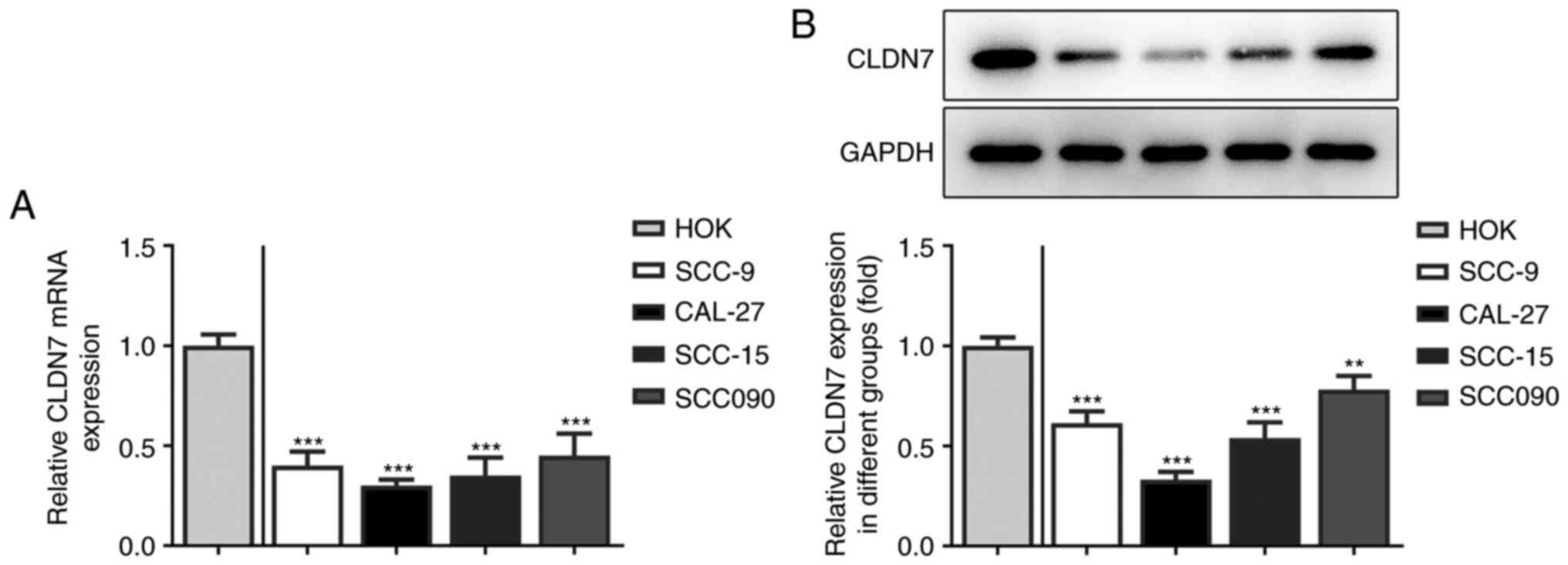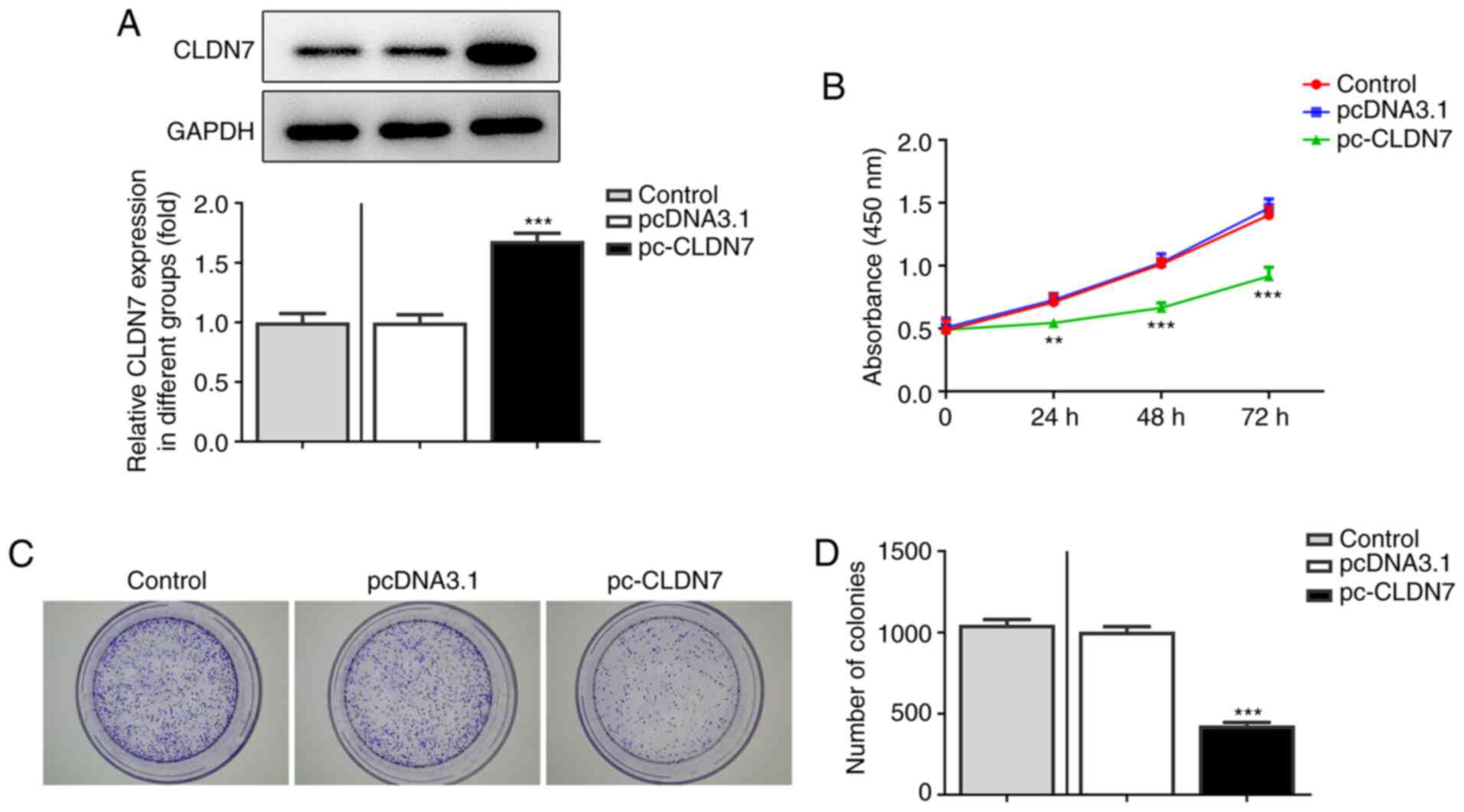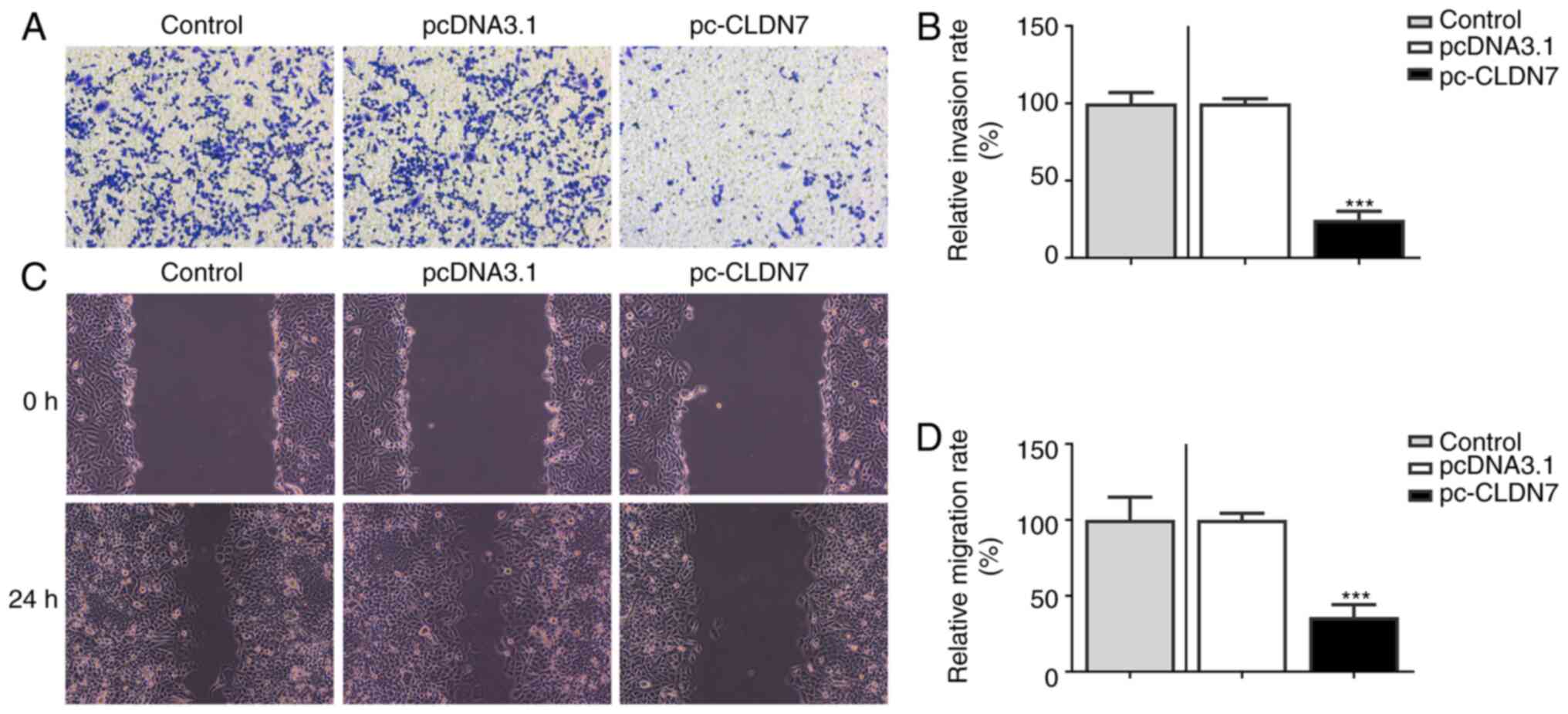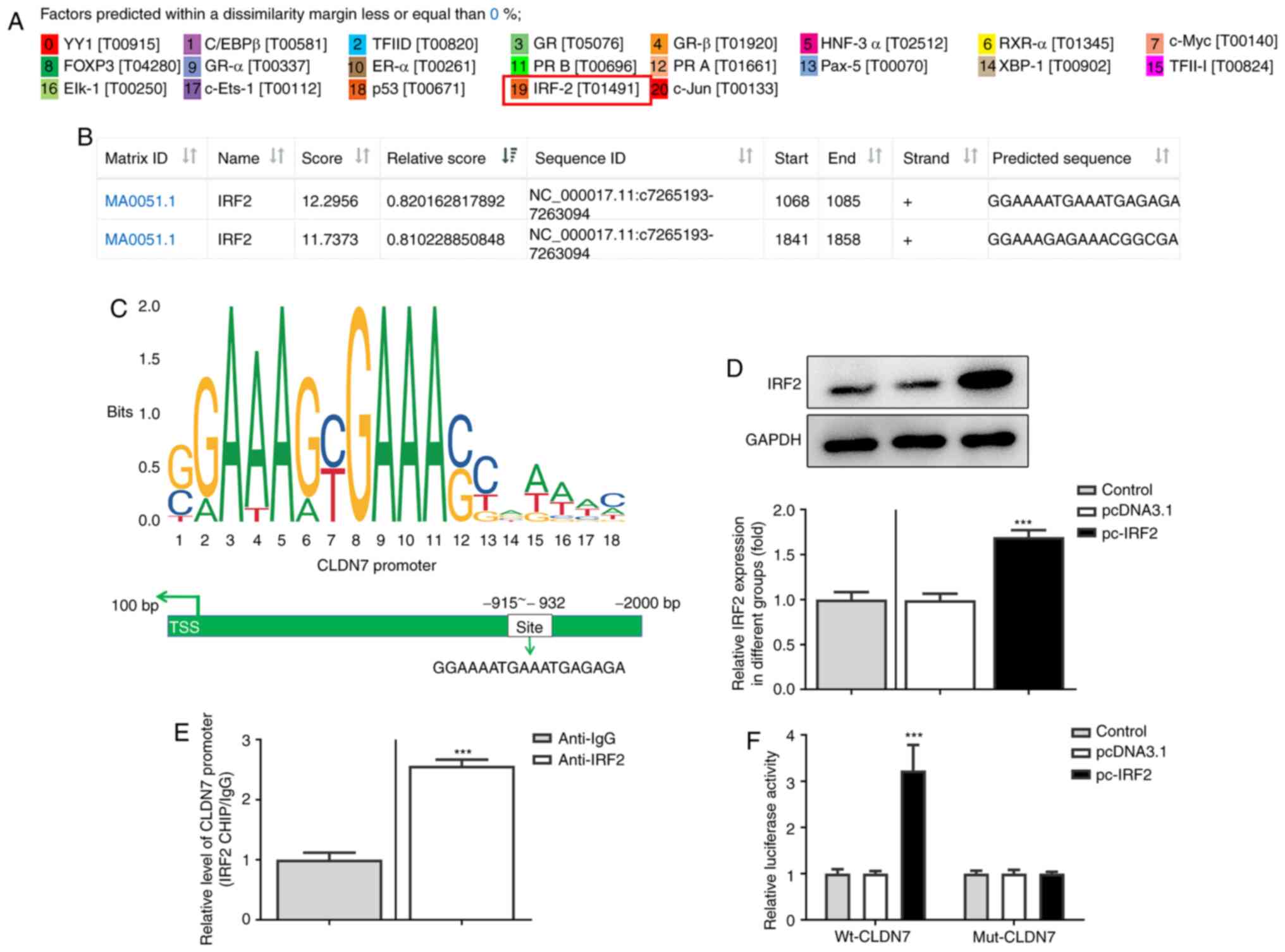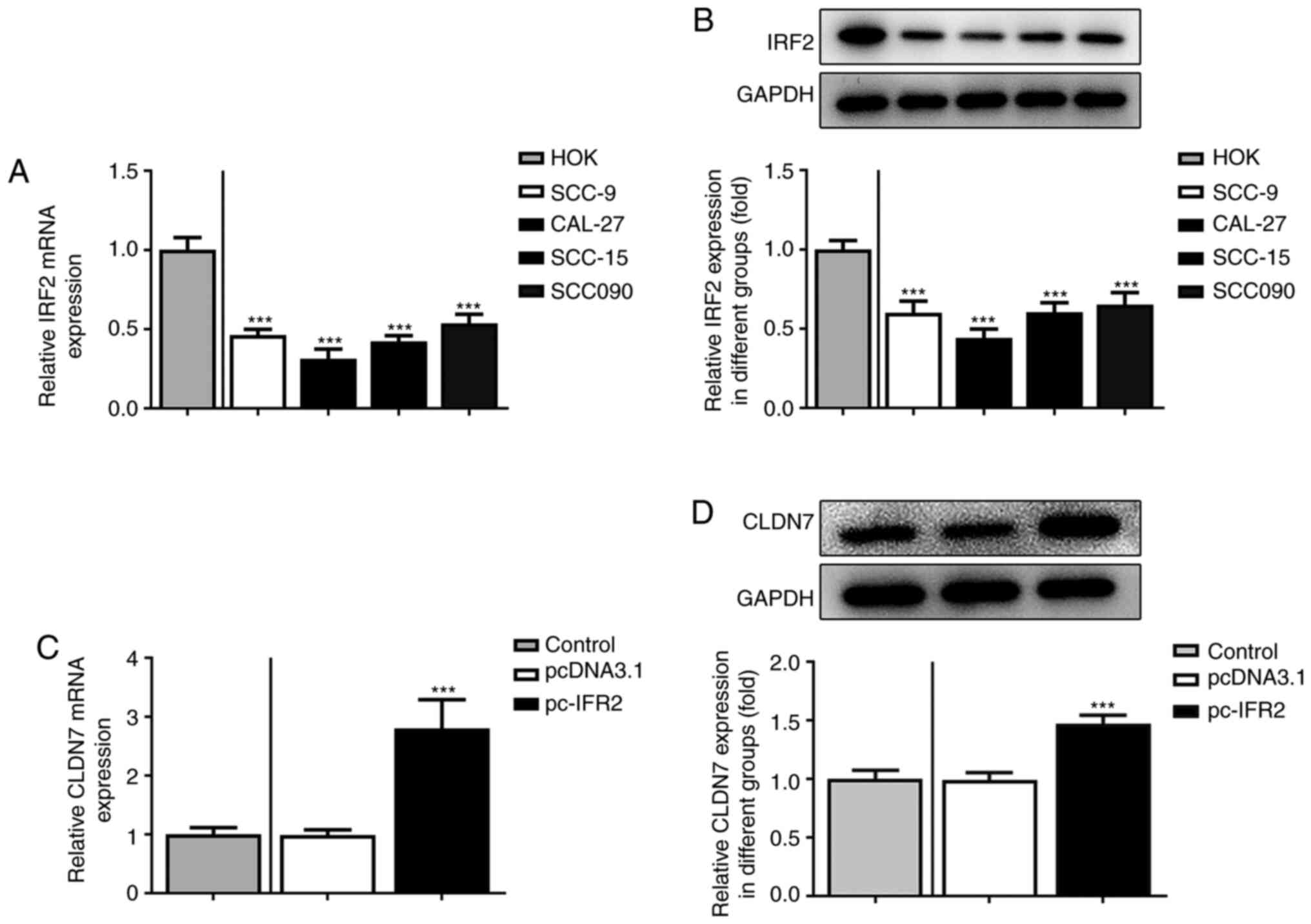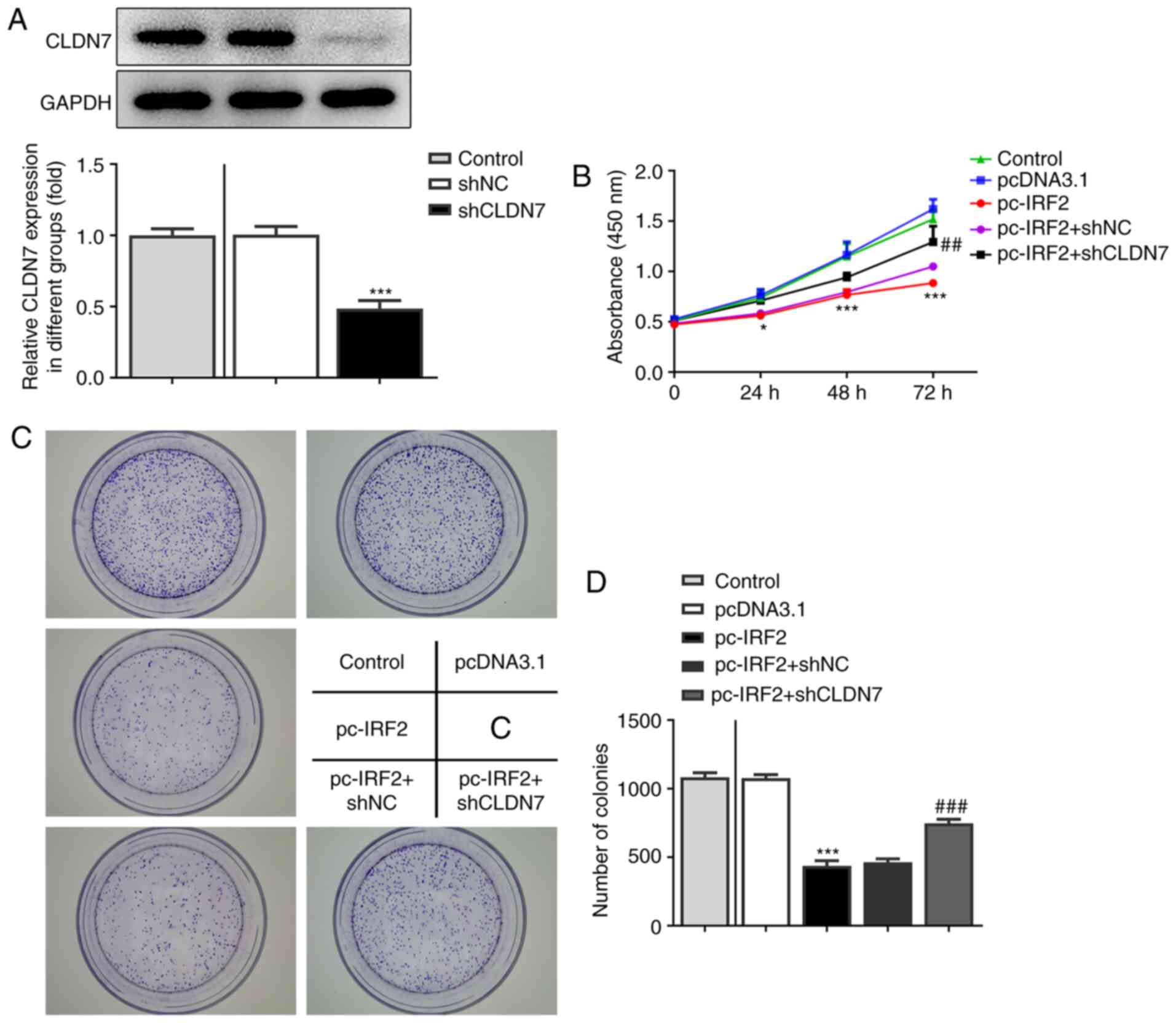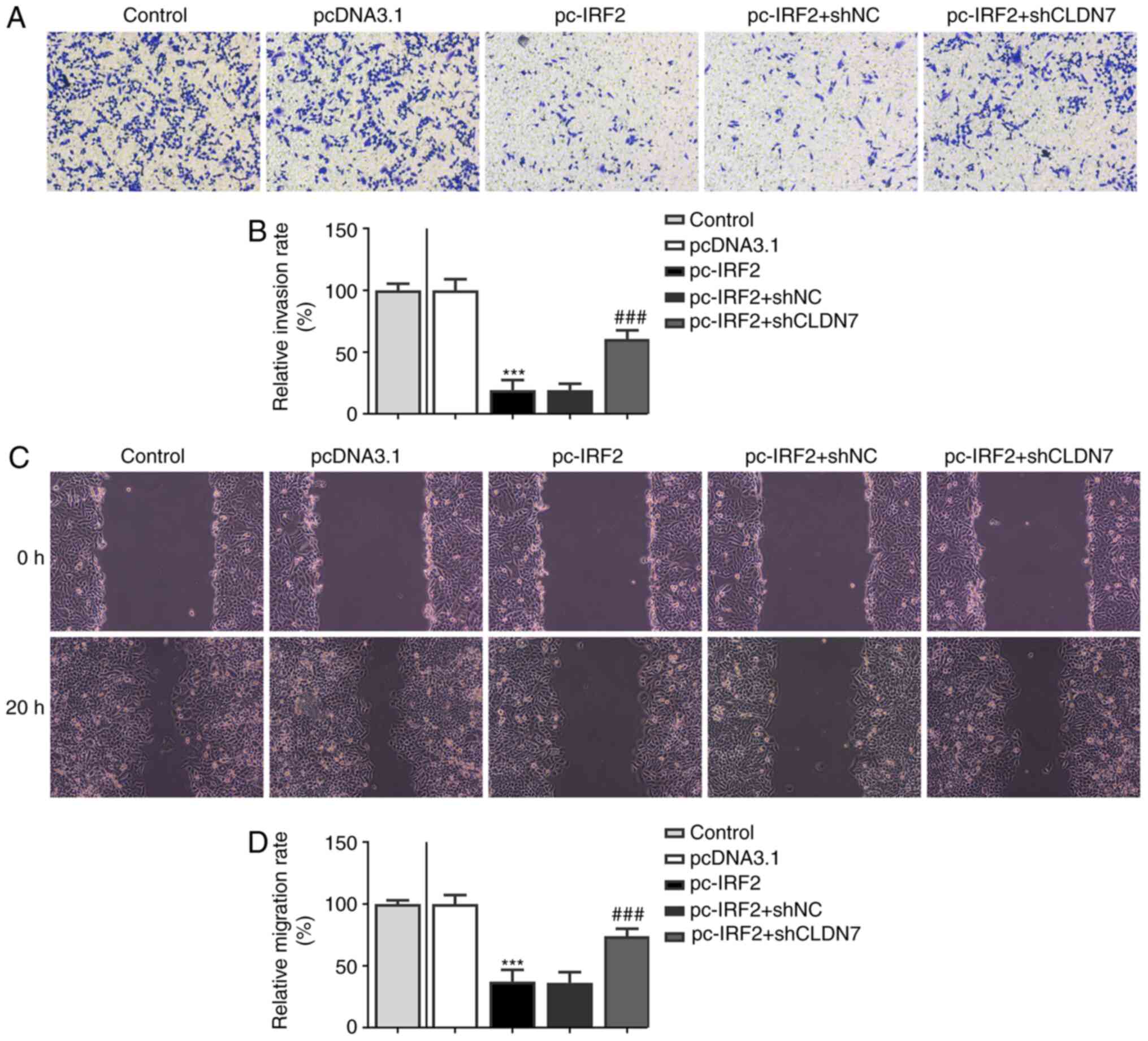|
1
|
Sasahira T and Kirita T: Hallmarks of
cancer-related newly prognostic factors of oral squamous cell
carcinoma. Int J Mol Sci. 19(2413)2018.PubMed/NCBI View Article : Google Scholar
|
|
2
|
Bray F, Ferlay J, Soerjomataram I, Siegel
RL, Torre LA and Jemal A: Global cancer statistics 2018: GLOBOCAN
estimates of incidence and mortality worldwide for 36 cancers in
185 countries. CA Cancer J Clin. 68:394–424. 2018.PubMed/NCBI View Article : Google Scholar
|
|
3
|
Sequeira I, Neves JF, Carrero D, Peng Q,
Palasz N, Liakath-Ali K, Lord GM, Morgan PR, Lombardi G and Watt
FM: Immunomodulatory role of Keratin 76 in oral and gastric cancer.
Nat Commun. 9(3437)2018.PubMed/NCBI View Article : Google Scholar
|
|
4
|
Li YY, Tao YW, Gao S, Li P, Zheng JM,
Zhang SE, Liang J and Zhang Y: Cancer-associated fibroblasts
contribute to oral cancer cells proliferation and metastasis via
exosome-mediated paracrine miR-34a-5p. EBioMedicine. 36:209–220.
2018.PubMed/NCBI View Article : Google Scholar
|
|
5
|
Gao D, Xu T, Qi X, Ning W, Ren S, Ru Z, Ji
K, Ma Y, Yu T, Li Y, et al: CLAUDIN7 modulates trophectoderm
barrier function to maintain blastocyst development in pigs.
Theriogenology. 158:346–357. 2020.PubMed/NCBI View Article : Google Scholar
|
|
6
|
Wang K, Li T, Xu C, Ding Y, Li W and Ding
L: Claudin-7 downregulation induces metastasis and invasion in
colorectal cancer via the promotion of epithelial-mesenchymal
transition. Biochem Biophys Res Commun. 508:797–804.
2019.PubMed/NCBI View Article : Google Scholar
|
|
7
|
Poon CE, Madawala RJ, Day ML and Murphy
CR: Claudin 7 is reduced in uterine epithelial cells during early
pregnancy in the rat. Histochem Cell Biol. 139:583–593.
2013.PubMed/NCBI View Article : Google Scholar
|
|
8
|
Romani C, Zizioli V, Silvestri M,
Ardighieri L, Bugatti M, Corsini M, Todeschini P, Marchini S,
D'Incalci M, Zanotti L, et al: Low expression of Claudin-7 as
potential predictor of distant metastases in high-grade serous
ovarian carcinoma patients. Front Oncol. 10(1287)2020.PubMed/NCBI View Article : Google Scholar
|
|
9
|
Ji H, Ding X, Zhang W, Zheng Y, Du H,
Zheng Y, Song H, Li M, Jiang Y, Xie J, et al: Claudin-7 inhibits
proliferation and metastasis in salivary adenoid cystic carcinoma
through Wnt/β-catenin signaling. Cell Transplant.
29(963689720943583)2020.PubMed/NCBI View Article : Google Scholar
|
|
10
|
Yoshizawa K, Nozaki S, Kato A, Hirai M,
Yanase M, Yoshimoto T, Kimura I, Sugiura S, Okamune A, Kitahara H,
et al: Loss of claudin-7 is a negative prognostic factor for
invasion and metastasis in oral squamous cell carcinoma. Oncol Rep.
29:445–450. 2013.PubMed/NCBI View Article : Google Scholar
|
|
11
|
Wang Y, Liu DP, Chen PP, Koeffler HP, Tong
XJ and Xie D: Involvement of IFN regulatory factor (IRF)-1 and
IRF-2 in the formation and progression of human esophageal cancers.
Cancer Res. 67:2535–2543. 2007.PubMed/NCBI View Article : Google Scholar
|
|
12
|
Cui L, Deng Y, Rong Y, Lou W, Mao Z, Feng
Y, Xie D and Jin D: IRF-2 is over-expressed in pancreatic cancer
and promotes the growth of pancreatic cancer cells. Tumour Biol.
33:247–255. 2012.PubMed/NCBI View Article : Google Scholar
|
|
13
|
Kneitz B, Krebs M, Kalogirou C, Schubert
M, Joniau S, van Poppel H, Lerut E, Kneitz S, Scholz CJ, Ströbel P,
et al: Survival in patients with high-risk prostate cancer is
predicted by miR-221, which regulates proliferation, apoptosis, and
invasion of prostate cancer cells by inhibiting IRF2 and SOCS3.
Cancer Res. 74:2591–2603. 2014.PubMed/NCBI View Article : Google Scholar
|
|
14
|
Pettersson S, Kelleher M, Pion E, Wallace
M and Ball KL: Role of Mdm2 acid domain interactions in recognition
and ubiquitination of the transcription factor IRF-2. Biochem J.
418:575–585. 2009.PubMed/NCBI View Article : Google Scholar
|
|
15
|
Chen YJ, Liang L, Li J, Wu H, Dong L, Liu
TT and Shen XZ: IRF-2 inhibits gastric cancer invasion and
migration by down-regulating MMP-1. Dig Dis Sci. 65:168–177.
2020.PubMed/NCBI View Article : Google Scholar
|
|
16
|
Tian JB, Cao L and Dong GL: Long noncoding
RNA DDX11-AS1 induced by YY1 accelerates colorectal cancer
progression through targeting miR-873/CLDN7 axis. Eur Rev Med
Pharmacol Sci. 23:5714–5729. 2019.PubMed/NCBI View Article : Google Scholar
|
|
17
|
Livak KJ and Schmittgen TD: Analysis of
relative gene expression data using real-time quantitative PCR and
the 2(-Delta Delta C(T)) method. Methods. 25:402–408.
2001.PubMed/NCBI View Article : Google Scholar
|
|
18
|
Binmadi NO and Basile JR: Perineural
invasion in oral squamous cell carcinoma: A discussion of
significance and review of the literature. Oral Oncol.
47:1005–1010. 2011.PubMed/NCBI View Article : Google Scholar
|
|
19
|
Takahara T, Kasamatsu A, Yamatoji M, Iyoda
M, Kasama H, Saito T, Takeuchi S, Endo-Sakamoto Y, Shiiba M,
Tanzawa H and Uzawa K: SIPA1 promotes invasion and migration in
human oral squamous cell carcinoma by ITGB1 and MMP7. Exp Cell Res.
352:357–363. 2017.PubMed/NCBI View Article : Google Scholar
|
|
20
|
Suren D, Yildirim M, Kaya V, Elal R,
Selcuk OT, Osma U, Yildiz M, Gunduz S and Sezer C: Expression
patterns of claudins 1, 4, and 7 and their prognostic significance
in nasopharyngeal carcinoma. J BUON. 20:212–217. 2015.PubMed/NCBI
|
|
21
|
Usami Y, Chiba H, Nakayama F, Ueda J,
Matsuda Y, Sawada N, Komori T, Ito A and Yokozaki H: Reduced
expression of claudin-7 correlates with invasion and metastasis in
squamous cell carcinoma of the esophagus. Hum Pathol. 37:569–577.
2006.PubMed/NCBI View Article : Google Scholar
|
|
22
|
Lioni M, Brafford P, Andl C, Rustgi A,
El-Deiry W, Herlyn M and Smalley KS: Dysregulation of claudin-7
leads to loss of E-cadherin expression and the increased invasion
of esophageal squamous cell carcinoma cells. Am J Pathol.
170:709–721. 2007.PubMed/NCBI View Article : Google Scholar
|
|
23
|
Zhang B, Lin Y, Bao QF, Zheng YT and Lan
L: MiR-1193 inhibits the malignancy of cervical cancer cells by
targeting claudin 7 (CLDN7). OncoTargets Ther. 13:4349–4358.
2020.PubMed/NCBI View Article : Google Scholar
|
|
24
|
Wu Z, Shi J, Song Y, Zhao J, Sun J, Chen
X, Gao P and Wang Z: Claudin-7 (CLDN7) is overexpressed in gastric
cancer and promotes gastric cancer cell proliferation, invasion and
maintains mesenchymal state. Neoplasma. 65:349–359. 2018.PubMed/NCBI View Article : Google Scholar
|
|
25
|
Lourenço SV, Coutinho-Camillo CM, Buim ME,
de Carvalho AC, Lessa RC, Pereira CM, Vettore AL, Carvalho AL,
Fregnani JH, Kowalski LP and Soares FA: Claudin-7 down-regulation
is an important feature in oral squamous cell carcinoma.
Histopathology. 57:689–698. 2010.PubMed/NCBI View Article : Google Scholar
|
|
26
|
Tamura T, Yanai H, Savitsky D and
Taniguchi T: The IRF family transcription factors in immunity and
oncogenesis. Annu Rev Immunol. 26:535–584. 2008.PubMed/NCBI View Article : Google Scholar
|
|
27
|
Sun L, Jiang Z, Acosta-Rodriguez VA,
Berger M, Du X, Choi JH, Wang J, Wang KW, Kilaru GK, Mohawk JA, et
al: HCFC2 is needed for IRF1- and IRF2-dependent Tlr3 transcription
and for survival during viral infections. J Exp Med. 214:3263–3277.
2017.PubMed/NCBI View Article : Google Scholar
|
|
28
|
Zhao GN, Jiang DS and Li H: Interferon
regulatory factors: At the crossroads of immunity, metabolism, and
disease. Biochim Biophys Acta. 1852:365–378. 2015.PubMed/NCBI View Article : Google Scholar
|
|
29
|
Sakai T, Mashima H, Yamada Y, Goto T, Sato
W, Dohmen T, Kamada K, Yoshioka M, Uchinami H, Yamamoto Y and
Ohnishi H: The roles of interferon regulatory factors 1 and 2 in
the progression of human pancreatic cancer. Pancreas. 43:909–916.
2014.PubMed/NCBI View Article : Google Scholar
|
|
30
|
Li X, Zhou C, Zhang C, Xie X, Zhou Z, Zhou
M, Chen L and Ding Z: MicroRNA-664 functions as an oncogene in
cutaneous squamous cell carcinomas (cSCC) via suppressing
interferon regulatory factor 2. J Dermatol Sci. 94:330–338.
2019.PubMed/NCBI View Article : Google Scholar
|
|
31
|
Lu C, Peng K, Guo H, Ren X, Hu S, Cai Y,
Han Y, Ma L and Xu P: miR-18a-5p promotes cell invasion and
migration of osteosarcoma by directly targeting IRF2. Oncol Lett.
16:3150–3156. 2018.PubMed/NCBI View Article : Google Scholar
|
|
32
|
Zhang F, Zhu J, Li J, Zhu F and Zhang P:
IRF2-INPP4B axis participates in the development of acute myeloid
leukemia by regulating cell growth and survival. Gene. 627:9–14.
2017.PubMed/NCBI View Article : Google Scholar
|















